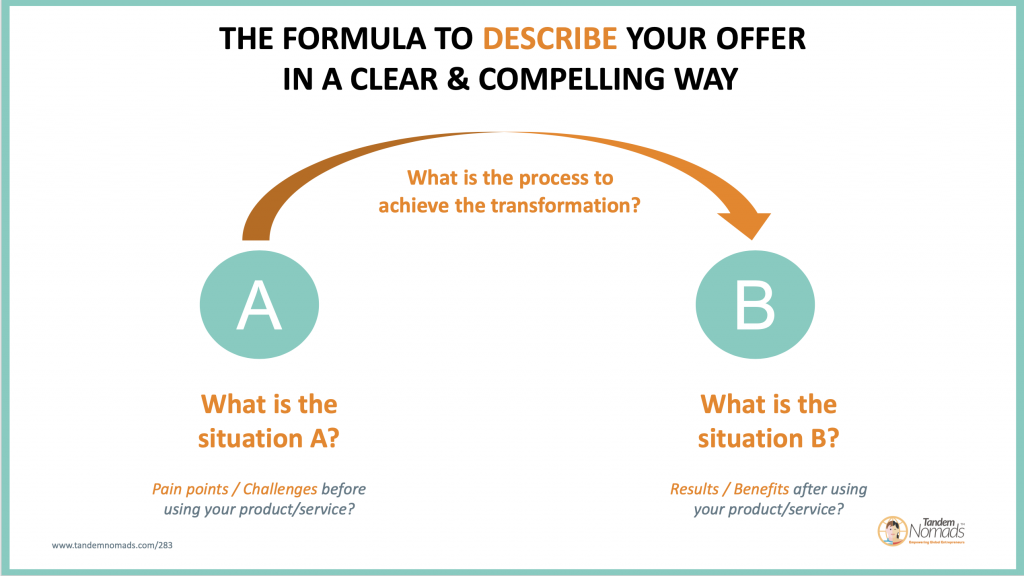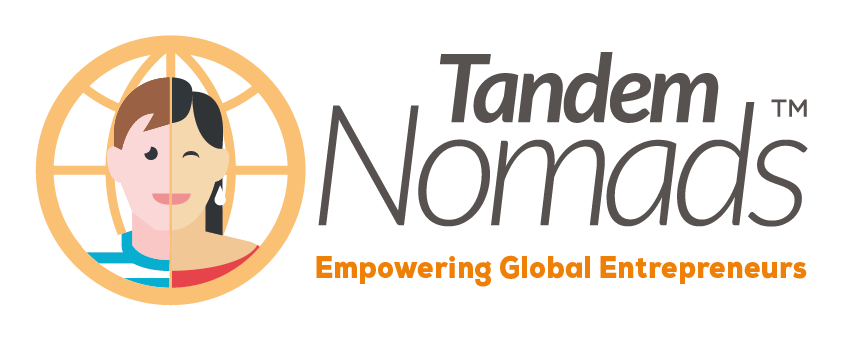The formula to describe what you do when networking

Do you feel hesitant when you have to explain what you do? Or that people don’t quite understand it in the way that you want them to?
If you’re like me, you might be starting to get back to in-person networking. The world has opened up again and there are increasing opportunities to meet people face to face. More and more events are also happening online.
It is important to describe what you do in an effective way, so that people can remember you if they need what you have to offer, or if they know someone who needs your product or service.
However, networking and pitching yourself to other people can feel a little awkward if you don’t know how to do it, or if you struggle to boil it down to just a few words when there is not enough time to say it all!
Creating and refining your pitch will really help you to lead with confidence at networking events and make high-quality connections.
When explaining what you do, the most important thing is to make sure that people clearly understand the value of what you offer.
If you don’t have a pitch already or you just want to refine your existing one, I am going to share with you here a quick formula that will help you. This is a simple but very effective way to make sure that you are describing your business and what you do in a compelling way.
This formula works whether the events you go to are in person or online. But with online events, you might have even less time to make an impact and fewer opportunities to give context to your story, so it’s important that you can get people’s attention very quickly or at least be very clear right away about what you really do.
Click here to download your free template to describe what you do effectively.
This formula is the first step to summarize in a few words what you do. The more you practice it and observe how people react, the more you will be able to adapt it and fine tune it to what people resonate with most.
This blog is a summary of the related podcast episode:
Click here to listen to the tips mentioned in this article.
The key principle to describe what you do effectively
The best thing is that you can use the principles of this formula for any situation or medium where you need to describe and promote your business, your offer, your product or your service. This principle can in fact be useful to design the copy on your website, your presentations, your social media posts and many other areas of your public communications.
To describe your business effectively, you need to be clear about the transformation you provide with your product or service.

To describe your business or your offer effectively you need to be clear about:
1. Who is this for and what niche do you serve?
As you’ve often heard me say, the key is to be specific about who you are targeting. If you try to reach everybody, you will reach nobody. Be super clear about who your ideal client is, especially in your marketing.
However, this does not prevent you from adapting that description to the circumstances and environment where you are, especially when networking.
Once you’re clear on your audience and the specific niche you want to serve, the next big part of attracting your ideal client is to explain what transformation you provide. What does your product or service do for people? How are they different as a result of buying your services?
2. What are the pain points (challenges or desires) you address?
To be interested people need to know what you can do for them, and most importantly what problem or desire you can solve for them!
Your ability to explain the pain points you address is probably one of the most important parts to being effective at explaining what you do and promoting your business effectively.
Therefore, you need to decide what you want to be known for. What problem are you solving for potential clients? Really take time to think about this as it’s an important part of understanding why potential clients want your services and what their motivations will be.
There is a difference however, between understanding the problem you solve and a potential client’s pain points. The pain points are the symptoms they are struggling with that make them think that they need your service or product. And most often people resonate strongly with your ability to describe the pain points they experience!
Think of it like going to the doctor. You don’t tell the doctor what disease you have when you have a consultation. When you go to a doctor, you complain mostly about the symptoms you experience. You are in fact often hoping the doctor will be able to tell you what the disease/problem is and what is the cure for it.
The same applies for your ideal client. Listen to potential clients to learn about their pain points. What are the most common things that they complain about?
For example, as an entrepreneur your big problem might be that it’s hard to find clients or that you are not using the right strategies for you. However, your symptoms are that you feel a sense of overwhelm with so many marketing strategies, you worry about lack of clarity, and you also feel stressed. These are your pain points. Your potential clients will express theirs in a similar way and this will lead you to being able to identify the problems you can solve for them.
3. What are the results (or benefits) that you provide?
When you’re clear on your ideal audience, their pain points and problems, it’s then time to look at the outcome. What is it that clients experience as a result of working with you? Also, what are they looking to get out of their experience using your product or service? If you have existing clients and still struggle to express this, talk to them about how they experience what you do for them. They will help give you clarity. And if you do not have clients yet, reach out to people who use similar products or services as yours!
4. What is the process you use to create that transformation?
In other words, how does your product or service work? What methods do you use to take them from their pain points to a positive result?
This is the part where you can give a bit more information about the features of your product, the unique approach of your services, etc.
Now, it’s your turn!
Now that you have the 4 important principles to describe what you do (or your offer) effectively, here is an example of how these principles could translate in just few words:
“I work with busy mompreneurs (the who) who struggle with finding the time and energy to cook healthy meals for themselves and their families (pain points).
I design personalized meal plans with delicious and easy recipes (the how – the process) so that they don’t have to worry about food anymore and feel proud to cook healthy meals that even their children love to eat (the results/benefits).
How would you describe what you do or your offer? Create and practice your own pitch in just a few words:
Click here to download your free template
This is a simple fill-in-the-blanks process that will guide you to that perfect paragraph.
In this workbook, you will find some extra guidance and advice on how to network effectively!
In fact, it’s also important to be prepared and be intentional when you meet people. Focus on being interested, rather than interesting. Learn about the other person so that you can help them, either through your business or even in their personal lives. You can also refer them to other people if they have a business, or to the right experts they need at the moment. That personal relationship is a key part to networking well and building a valuable network.
Networking is also all about giving value as you build those relationships. One of my favorite books about networking and growing your network in this meaningful way is The Go-Giver by Bob Burg. It has been a huge influence on my own business journey and I was also thrilled to interview him on Tandem Nomads.
Listen to this interview with Bob Burg.
Now, it’s time to start practicing your pitch… and let me know about your amazing pitches. I’m excited to hear how the formula worked for you!
When you download your free workbook, you will receive an email from me. Use that email address if you’d like to connect with me!

